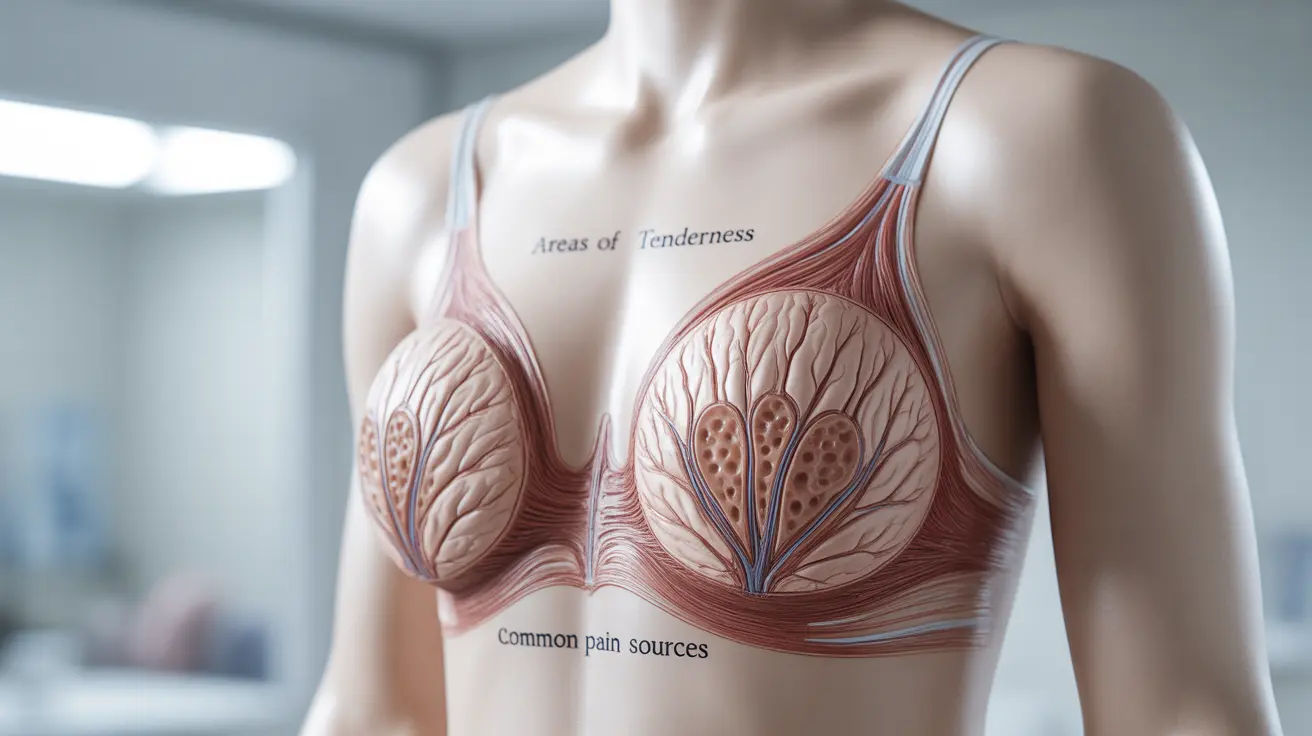Experiencing breast pain or tenderness when pressing on your breast is a common concern that affects many women. While it can be worrying, most cases of breast pain are related to normal hormonal changes or benign conditions. Understanding the various causes and knowing when to seek medical attention can help you better manage this common symptom.
In this comprehensive guide, we'll explore the different reasons why your breast might hurt when pressed, discuss treatment options, and help you understand when medical attention is necessary.
Common Causes of Breast Pain When Pressed
Several factors can contribute to breast tenderness and pain upon touching or pressing:
Hormonal Changes
The most common cause of breast pain when pressed is hormonal fluctuations related to your menstrual cycle. These changes can cause:
- Cyclical breast tenderness
- Swelling and inflammation
- Increased sensitivity to touch
- General discomfort throughout the breast tissue
Fibrocystic Changes
Fibrocystic breast changes are another frequent cause of breast pain and tenderness. These changes can result in:
- Formation of fluid-filled cysts
- Lumpy or rope-like breast tissue
- Increased sensitivity in specific areas
- Pain that varies throughout your menstrual cycle
Infections and Other Medical Conditions
Mastitis
Breast infections, particularly mastitis, can cause significant pain and tenderness when pressed. Common symptoms include:
- Redness and swelling
- Warm areas to the touch
- Severe pain upon pressure
- Possible fever and fatigue
Breast Cysts
Fluid-filled sacs in the breast tissue can cause localized pain and tenderness, especially when pressed. These cysts are typically:
- Round and smooth
- Mobile under the skin
- Tender to touch
- Variable in size
When to Seek Medical Attention
While most breast pain is benign, certain symptoms warrant immediate medical evaluation:
- Severe pain that interferes with daily activities
- Redness, warmth, and swelling that could indicate infection
- New or changing lumps
- Pain accompanied by fever or other systemic symptoms
- Discharge from the nipple
- Pain that doesn't relate to your menstrual cycle
Self-Care Measures for Breast Pain
Several home remedies and lifestyle changes can help manage breast pain:
- Wearing a properly fitted, supportive bra
- Applying cold or warm compresses
- Taking over-the-counter pain relievers
- Reducing caffeine intake
- Maintaining a healthy diet low in fatty foods
- Regular exercise and stress management
Frequently Asked Questions
- What are the most common reasons my breast hurts when I press on it?
The most common reasons include hormonal changes during your menstrual cycle, fibrocystic breast changes, and temporary inflammation. Most cases of breast pain when pressed are benign and related to normal hormonal fluctuations.
- How can hormonal changes during my menstrual cycle cause breast tenderness?
Hormonal fluctuations, particularly of estrogen and progesterone, can cause breast tissue to become swollen and sensitive. This typically occurs before menstruation and improves once your period begins.
- When should I see a doctor about breast pain that happens with pressure?
See a doctor if you experience severe pain, redness, warmth, fever, new or changing lumps, nipple discharge, or pain unrelated to your menstrual cycle. These symptoms may require medical evaluation.
- Can breast cysts or infections cause pain when pressing on the breast?
Yes, both cysts and infections can cause localized pain when pressed. Cysts are fluid-filled sacs that may be tender to touch, while infections like mastitis can cause more severe pain along with redness and swelling.
- What self-care steps can help relieve breast pain caused by benign conditions?
Self-care measures include wearing a supportive bra, using cold or warm compresses, taking over-the-counter pain relievers, reducing caffeine intake, and maintaining a healthy lifestyle. These steps can help manage most cases of benign breast pain.




